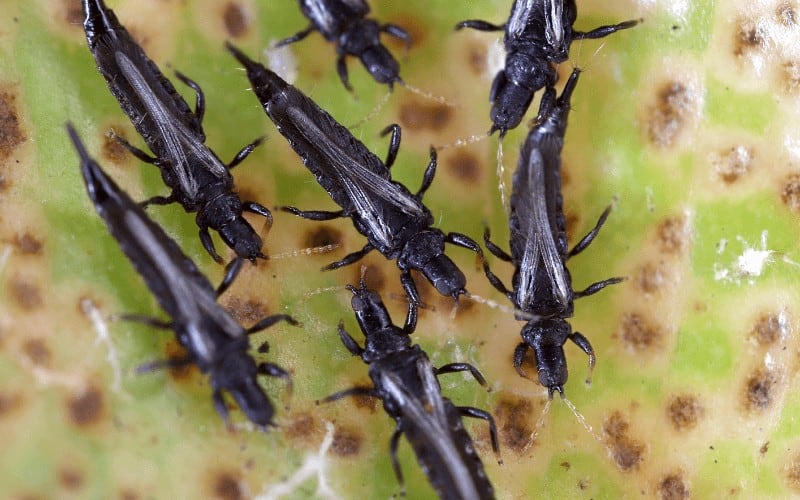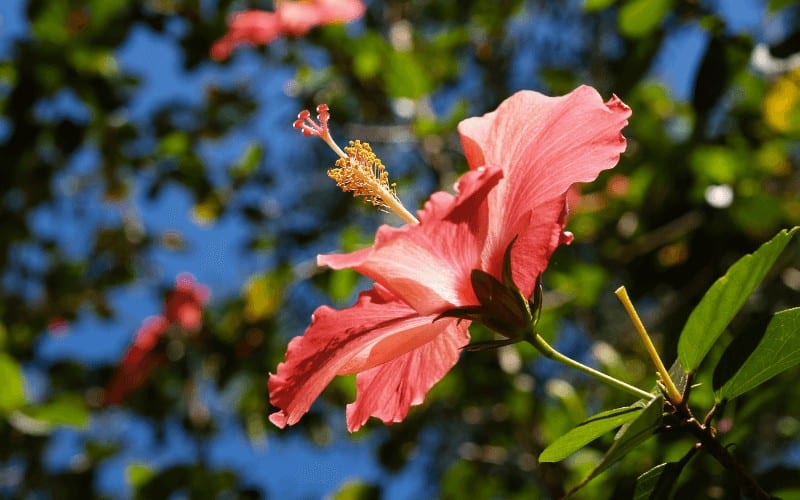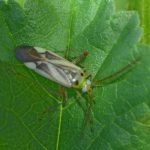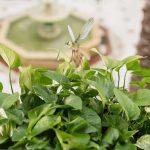Hibiscus is considered an easy maintenance plant which makes it perfect for inexperienced plant owners. Hibiscus can also be planted in containers and pots, which can be used to add a tropical feel to your home.
As a garden plant, hibiscus has the attribute of making your garden look like a tropical paradise. This low-maintenance plant; however, attracts thrips, which are common pests found in various houseplants and outdoor gardens.
Thrips can cause lots of damage to hibiscus plant, which is why you should learn how to get rid of thrips on hibiscus.
The most effective way of getting rids of thrips is by cutting off the parts affected by the pest. You can also use natural insecticidal soap to get rid of them.
Table of Contents
How To Identify Thrips on Hibiscus

The scientific name of thrip is Thysanoptera. These pests are slender, tiny insects with distinctive asymmetrical mouthparts and fringed wings.
They are also called thunder flies and cause damages to plant by sucking in all the juices from the leaves, flowers, and fruits. The pests are also known to transmit viruses to plants.
Most species of thrips come in either yellow, brown or black colors with narrow, fringed wings. The nymphs tend to be light green or yellow and look like smaller adults.
It is usually hard to see thrips unless with the use of magnifying glass. They usually look like tiny dark slivers on your hibiscus plant.
The easiest way to check if your hibiscus plant is infested by thrips is by shaking the hibiscus flower over a white piece of paper.
If you see something looking like small, black pencil lines on the paper, there is a high chance your hibiscus plant is infested by the pests.
Damages Caused by Thrips on Hibiscus

Below are some of the damages that thrips can cause on hibiscus plants:
1. Bud Drop
This is the most significant damage caused by the thrip infestation. The hibiscus bud grows quite large, then switches to an off-color before falling off. In some cases, the bud gets enlarged, falls off before turning color.
Bud drops in hibiscus plants usually happen because thrips feed on the juices of the flower. Also, the thrips have been scratching around inside the bud and laying eggs inside of it.
Usually, when the bud falls off, the young thrips discard the bud and burrow into the ground. Then, they complete their cycle in the soil and change into adult thrips and search for a new plant to destroy.
2. Scratches Marks on Hibiscus Petals and Leaves
In some cases, the hibiscus flower won’t lose its bud. Instead, the thrips scratches the petals and flowers, leaving marks on the flower petals.
For a new plant owner, these marks might look almost natural. You might just assume that the hibiscus plant is producing an interesting variety of flowers.
3. Bleached or Yellow Spots on The Leaves
Bleached or yellow spots on the leaves are caused by the fecal matter of thrips on your plant. This is usually the earliest sign of thrips infestation on your hibiscus plant.
With time, the damage progresses to silvery leaves with black spots, resulting in thinning and wilting of the flower.
How To Get Rid of Thrips on Hibiscus
You can effectively get rid of thrips with the steps discussed below:
1. Cut Off Rotten Buds
Remember that the obvious damage caused by thrips on hibiscus plants is the dropping of enlarged buds.
Therefore, cutting off these rotten buds is the obvious and most effective way of getting rid of thrips on hibiscus plants.
Make sure that all the rotten buds are carefully disposed of in the trash. You don't want adult thrips resurfacing later on to plague your plants.
2. Use of Neem Oil and Insecticidal Soap
Usage of neem oil and insecticidal soap is a great way to get rid of thrips organically. Most insecticidal soap can be made at home with a spray can, a teaspoon of liquid dishwasher liquid, and water.
You can also purchase products containing natural Neem oil insecticide for plants. Getting rid of thrips organically might take some time, but it is still an effective alternative method to eliminate these plant pests.
When spraying, ensure to coat the entire plant. Focus more on hidden spots like the undersides of the leaves and where the leaves attach to the stems.
3. Use of Pest control Products
This method may be considered a drastic way of getting rids on thrips. However, this method is to be adopted when cutting off the infected buds and the use of neem oil failed to get rid of the pests.
Spinosad is recommended because it is gentle on plants and doesn’t have side effects. The product comes in a spray bottle. Spray Spinosad over the tops of the plants; make sure to cover the buds and upper leaves of the plants.
For Spinosad to be effective, it requires 3 treatments. Each treatment should be at least 5-7 days apart.
With each treatment, the number of thrips will reduce drastically until nothing is left. You can also drench the potting mix or soil in Spinosad – this will help speed up control of this pest.
Frequently Asked Questions
Will Dawn Dish Soap Kill Thrips?
Yes. Any liquid dishwasher can be used as an insecticidal soap. Simply add 1 tablespoon of dawn dishwasher in a spray can and mix with water.
Spray it on your plants to control pests like aphids, mealybugs, thrips, whiteflies, spider mites, and scales.
Are Thrips Hard to Get Rid of?
Just like most pests, getting rid of thrips is not so easy. But with the right amount of consistency and dedication, you can completely eradicate the pests.
How Does Dish Soap Get Rid of Thrips?
Dish soap works by covering the insects and smothering them. They end up blocking the pores through which the pests breathe.
What Color Are Thrips Attracted to?
Thrips are attracted to bright colors, which explains why they are attracted to hibiscus plants.
Conclusion
Watching thrips damage your beautiful, blooming hibiscus flower is not a beautiful sight to behold. This post gives practical on how to get rid of thrips on hibiscus.
Have it in mind that getting rid of the pest is a slow and gradual process. The most effective way of getting rid of thrips is by cutting off all infected hibiscus buds and trashing them immediately.
Remember that providing your plant with a healthy and ideal environment is the surest way to prevent thrip infestation.
Related Posts:
- Common Types of Leaf Diseases
- How To Get Rid Of Gnats In Houseplants With Vinegar
- How Do You Get Rid Of White Fungus On Palm Trees?
- How Do You Treat White Rust On Plants?
- How To Get Rid Of Spider Mites On Hibiscus
- Will Vinegar Kill Aphids on Hibiscus?




